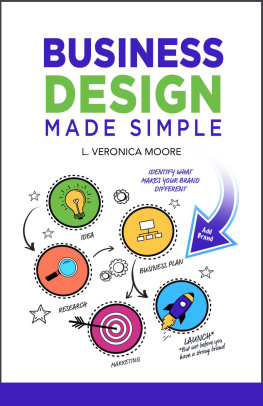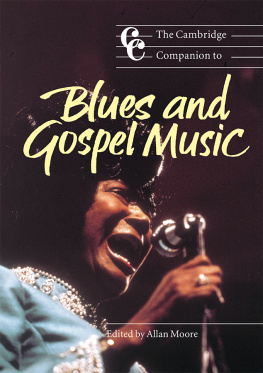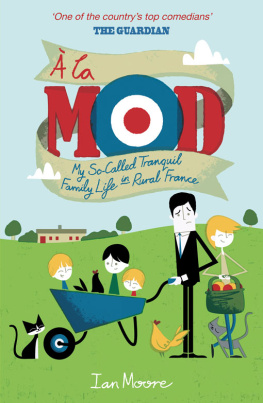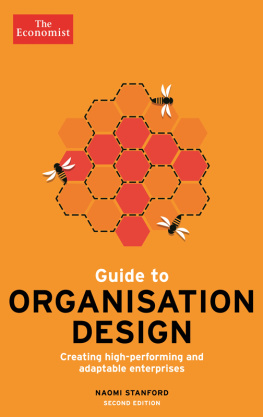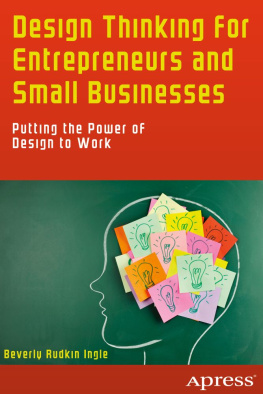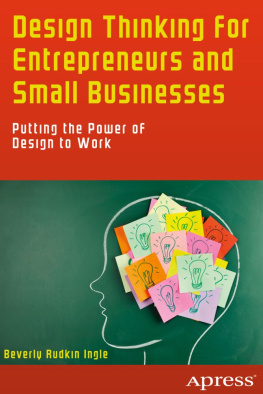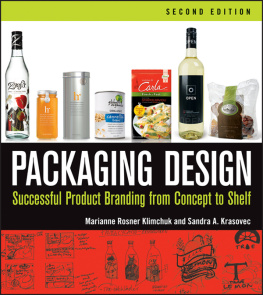Free Gift
As a thank you for purchasing my book, Im offering a free digital product for my readers. Setup you Business Brand style Guide To learn more, go to the link below and get immediate access: www.lvmoore.com/brandstyleguide
Copyright 2022 by L. Veronica Moore.
Business Design Made Simple.

Contents
Introduction
Over the years, I have come across some really talented individuals who have never taken a design class but have a great eye for design. I have always learned something new with each project I worked on with them, especially understanding their perspective. I have felt that if they understood a few of the basic design guides (and could get around the software), they would definitely come up with much better solutions than I did.
There are a couple areas where I want to help non-designers get an edge when it comes to producing products or promotional materials. Its the printer speak, covering the basics that will provide an understanding of the printing process, and explaining how to get the best product when working with a designer.
I hope that the tips I provide for the starting entrepreneur will reduce the learning curve and get you on your way to successful interaction and execution of effective marketing materials. Most of all, I hope by providing this information on how to make the best choices for your brand that you learn its the key to visual consistency in building habits that create a strong brand.
"The best brands are built on great stories."
IAN ROWDEN, CHIEF MARKETING OFFICER OF VIRGIN GROUP
Investing time up front to define and articulate your brand strategy is key to success.
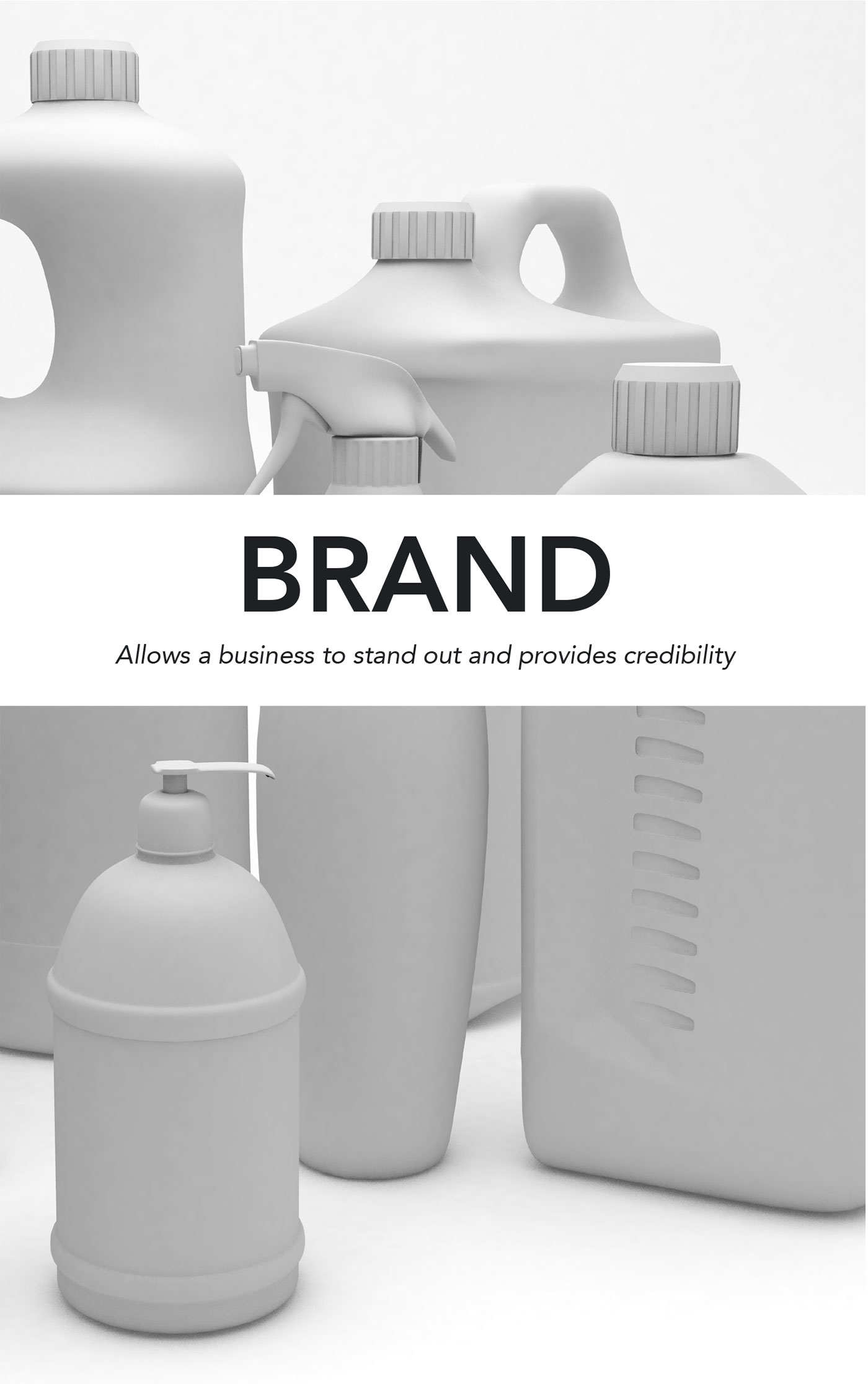
CHAPTER 1:
"Your brand is what people say about you when you are not in the room."
JEFF BEZOS
There are so many different ways that brand is defined, it's no wonder that it can have a different meaning depending on who you ask. The many iterations of the word have had me struggling with the best way to define it and most of all, how to simplify its meaning. My favorite quote that resonates with me is the way the founder and CEO of Amazon explains it: "Your brand is what people say about you when you are not in the room." In my opinion, this sums it up the best. The real meaning of a brand is the essence/spirit of a business. When consumers interact with your brand, they experience something. What that is will depend on you. Unfortunately, few entrepreneurs fully understand a brand's importance.
The most common misconception is that the brand is the logo of a company, yet it's much bigger than an icon on a website.
What is the story behind your business? It's much more than history. The best way to explain it, as an entrepreneur, is that it's your "why?" It's what drives you to provide the service or product. An entrepreneur has to reach back and find the true meaning. In other words, what is it that inspired the conception of your business? This shouldn't be mechanical, such as, "In 2019, Company A started to sell product B from a 700-square-foot apartment," etc. Do you get the idea? This isn't what consumers want to know. Your audience wants to connect with you and your product or service.
Millennial and Gen Z consumers demand that businesses care for something more than just profit, and if they cant see that from a brand, they dont hesitate to look for a brand that does. (Oberlo, December 31, 2020) oberlo.com/blog/branding-statistics
I debated placing this subject as the last chapter of the book. I thought I would save it for the end because I felt it would be the most difficult to write. But the more I thought about it, the more I realized it should be the first chapter. The reason? I believe that branding is the foundation of a business's presence that determines its success. It's what an entrepreneur needs to use to build upon. The focus and building up of a brand for your business is key and one of the first steps to take before opening the doors, be it online or physically.
A study by Harvard Business Review states that "defining and upholding a meaningful brand purpose can positively affect all of the following areas of a business:
- Inspiring innovation, creativity, and change;
- Creating more value for the customer;
- Increasing customer loyalty and referrals;
- Providing employees with a sense of meaning and fulfillment;
- Attracting the right talent for your team;
- Making an impact on society or your community.
Ultimately, a successful, purpose-driven brand will create a strong bond with the right audience because it sees customers as more than just buyers."
If it's done correctly, branding can be the glue that holds the business together. I would say that about 20 to 25 years ago, there wasn't much of an understanding of how to use branding or even the value of it (with the exception of the larger companies). Those companies had experts and the funding to invest in all the tools available to succeed. Now, it seems like it's the word of the day with Millennials. But this doesn't mean that because someone uses the word, there is a true understanding of what it means or know-how to leverage this tool.
Leveraging your brand creates differentiation between your company and the competitors. They may sell the same products, but the difference is with why you chose to provide this service or product. No, I don't mean what you are selling physically or what packaging you plan to use. (Sure, it does become part of the brand, but it has to be paired with service.) How do you want your customers to feel? What is it about your service that is unique and makes a customer want to return? In my opinion, the secret to success is the combination of customer service, a quality product, and a business that gives back to the community.
Starbucks
When interacting with your customers, how do you want them to feel? Starbucks puts the customers' names on their cups, giving a more personalized service. It's a simple act, but this in combination with a quality product and a friendly environment for enjoying coffee with friends, coworkers, or clients, is what keeps customers returning time and again.
In 1997, Starbucks established the Starbucks Foundation to strengthen communities by transforming lives across the world, with a focus on enabling community resilience and prosperity, and uplifting communities affected by disaster. They have had several campaigns over the years, such as empowering women and girls, as well as a focus on COVID awareness. The company didn't end with the latter, however. In 2018, it launched its Greener Stores framework, an initiative to make 300 stores 100% powered by renewables, 25% more energy efficient and 30% more water efficient, and to improve recycling and waste diversion. (January 21, 2020, stories.starbucks.com) . Other contributions were millions of hours of community service, and the creation of a ground-breaking college program for Starbucks partners (April 24, 2017, stories.starbucks.com/stories) .
"A survey shows that 73% of consumers cite customer experience as an important factor in their purchasing decisions." (PWC, 2018).
So, take the time to think about integrating your core values with your "why?" What inspired you to create your business or product? Then combine the two to create a story to share with your audience. This is called your brand story. The brand story attracts your tribethose who feel an emotional connection to your product or service and want to be a part of your brand.
Next page
